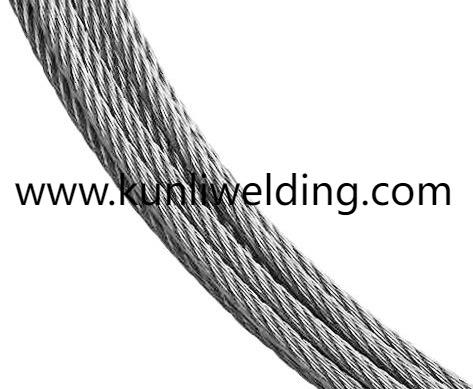Are Automotive Programs Pushing TIG Wire Spec Changes For Lightweight Vehicles

As manufacturers push toward lighter, more efficient products across multiple sectors, Aluminum Tig Wire Suppliers is a phrase procurement teams use when they need filler that performs in demanding, visible, or safety critical joints. High purity TIG filler wire plays a role wherever finish quality matters and where assemblies must endure fatigue or corrosive exposure. In this article we walk through the industries that depend on aluminum TIG wire, why they rely on it, and what buyers should watch for when qualifying suppliers and materials.
Automotive and electrified mobility
The drive to reduce vehicle mass and to extend battery range has pushed automakers to adopt more aluminum in frames, body panels and battery enclosures. TIG welding is often the method of choice for thin gauge, aesthetic or complex joints where a tidy bead and controlled heat input are essential. Fabrication teams value TIG filler for projects that require a clean surface before painting and for joints where distortion control preserves tight tolerances. As vehicle programs accelerate toward lighter structures and new powertrains, consistent high purity filler and reliable supply chains become procurement priorities.
Aerospace and precision structures
Aerospace applications lean on TIG welding when precision and inspection standards are strict. Small components, ducts, heat exchangers and certain structural fittings often need the low spatter and fine control TIG affords. For manufacturers and repair stations working to certifiable standards, filler wire quality and traceability matter as much as welding technique. When assemblies face vibration and cyclic loads, the combination of a controlled TIG process and high quality aluminum filler helps preserve fatigue life and meet inspection thresholds.
Marine and offshore fabrication
Shipbuilders and marine equipment makers depend on TIG processes to join aluminum structures that will face saltwater and weather. Corrosion resistance, smooth bead finish before sealant or coating, and the ability to weld thin sections without burn through are all reasons TIG filler is common in boat hulls, decks and superstructures. Repair yards also rely on TIG filler for on site fixes because it enables controlled, low distortion repairs that return assets to service quickly. Supplier notes about packaging and handling are especially important here to avoid contamination that could compromise a weld in a corrosive environment.
Renewable energy and infrastructure
Renewables and related infrastructure increasingly use aluminum for frames, mounts, masts and some electrical components because of the balance between strength and weight. TIG welding joins lightweight structural elements and certain conductive parts where neat joints and corrosion resilience are required. As renewable projects scale and logistics strain supply lines, buyers favor suppliers who publish clear product notes and who support representative trials so teams can qualify wire without delaying construction schedules. The shift toward large scale deployments has made consistent filler quality a practical site risk control.
Rail, transit and specialty transport
High speed and urban transit vehicles often require aluminum sections for bodies and interior structures. TIG welding is used where appearance and tight assembly tolerances are required, such as door frames and interior paneling. In these environments durability under repeated loading and resistance to environmental exposure are central concerns. Fabricators choose TIG filler that helps minimize post weld finishing while meeting service life expectations and regulatory inspection regimes.
Bicycle and sporting goods manufacturing
Performance bicycle frames and some sporting equipment use welded aluminum tubes where TIG offers fine control and attractive weld beads. For high end frames the joint finish affects both cosmetic appeal and fatigue resistance. Manufacturers in this niche rely on consistent filler quality so that welders can reproduce joint geometry and finish across a production run. Advances in welding fixtures and automation paired with consistent TIG filler delivery help scale what were once artisan builds.
Why supplier transparency and testing matter
Across these industries the common theme is that filler chemistry, packaging and traceability matter to final outcomes. Suppliers who publish application notes, handling guidance and recommended trial procedures shorten qualification cycles and reduce the chance of performance surprises when a spool is first mounted. Practical procurement steps include requesting sample spools, running representative welds on your fixtures, and documenting feedability and bead appearance under the shielding and travel parameters your teams use. Those steps convert vendor claims into operational confidence on the shop floor.
Operational practices that buyers should require
Make storage and staging part of acceptance criteria so spools arrive ready to weld. Include handling notes for transport and for partial spool reuse to prevent contamination and feed issues. Standardize a short validation protocol that covers bead form inspection, basic mechanical checks appropriate to the application, and finishing workflow assessment. For field repair contexts, require supplier guidance on reconditioning a spool if it has been exposed to adverse conditions. These modest requirements lower the chance of rework and preserve schedule reliability.
Final thoughts: aligning selection with industry needs
Aluminum TIG filler wire sits at the intersection of metallurgical choice and practical shop discipline. Industries that require tidy appearances, low distortion and predictable fatigue behavior place higher value on high purity filler and on suppliers who support rapid qualification. When designers, welders and procurement teams collaborate early, the right wire selection becomes an operational enabler rather than a late stage fix. To review alloy ranges and product details from a manufacturer that provides application notes and sample support visit the product area at https://www.kunliwelding.com/product/aluminum-alloy-wire/aluminum-alloy-welding-wire.html .
- Art
- Causes
- Crafts
- Dance
- Drinks
- Film
- Fitness
- Food
- Παιχνίδια
- Gardening
- Health
- Κεντρική Σελίδα
- Literature
- Music
- Networking
- άλλο
- Party
- Religion
- Shopping
- Sports
- Theater
- Wellness


